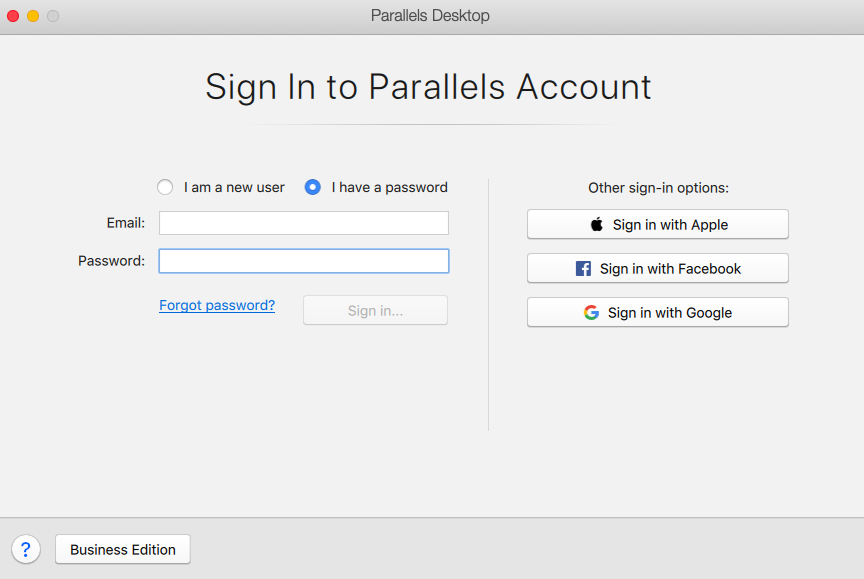-->

Applies to:

Mac OS Leopard 10.5 is the sixth release by Mac OS for Apple’s desktop and server operating system for Macintosh computers. It is available in two editions: for desktop or personal computers and server version (Mac OS X Server). The retail price for the desktop version is $129 and $499 for the server version. It was released on October 26, 2007. Created by Alessandro Fabbri. With Vittoria Puccini, Francesco Scianna, Camilla Filippi, Simone Colombari. A group of characters is implicated in the murder of Angelica.
If you are using Splunk 6.6.2 or before, its embeded trial license key has already expired on 25 Aug 2017. But if you try Splunk 6.6.3, you should be ok. Step 2: Boot Mac in the Recovery Mode. Once you have taken a backup of your Mac data, you need to restart in the recovery mode. The Mac Recovery Mode is a dedicated module in the operating system that provides all kinds of firmware and disk-related options. Recoverit Mac Data Recovery. When it comes to the free data recovery software for Mac, Recoverit.
Want to experience Microsoft Defender for Endpoint? Sign up for a free trial.
This topic describes how to install, configure, update, and use Defender for Endpoint on Mac.
Caution
Running other third-party endpoint protection products alongside Microsoft Defender for Endpoint on Mac is likely to lead to performance problems and unpredictable side effects. If non-Microsoft endpoint protection is an absolute requirement in your environment, you can still safely take advantage of Defender for Endpoint on Mac EDR functionality after configuring the antivirus functionality to run in Passive mode.
What’s new in the latest release
Tip
If you have any feedback that you would like to share, submit it by opening Microsoft Defender for Endpoint on Mac on your device and navigating to Help > Send feedback.
To get the latest features, including preview capabilities (such as endpoint detection and response for your Mac devices), configure your macOS device running Microsoft Defender for Endpoint to be an 'Insider' device.
How to install Microsoft Defender for Endpoint on Mac
Prerequisites
- A Defender for Endpoint subscription and access to the Microsoft Defender Security Center portal
- Beginner-level experience in macOS and BASH scripting
- Administrative privileges on the device (in case of manual deployment)
Installation instructions
There are several methods and deployment tools that you can use to install and configure Defender for Endpoint on Mac.
Third-party management tools:
Command-line tool:
System requirements
The three most recent major releases of macOS are supported.
Important
On macOS 11 (Big Sur), Microsoft Defender for Endpoint requires additional configuration profiles. If you are an existing customer upgrading from earlier versions of macOS, make sure to deploy the additional configuration profiles listed on New configuration profiles for macOS Catalina and newer versions of macOS.
Important
Support for macOS 10.13 (High Sierra) has been discontinued as of February 15th, 2021.
- 11 (Big Sur), 10.15 (Catalina), 10.14 (Mojave)
- Disk space: 1GB
Beta versions of macOS are not supported.
macOS devices with M1 processors are not supported.
After you've enabled the service, you may need to configure your network or firewall to allow outbound connections between it and your endpoints.
Licensing requirements
Microsoft Defender for Endpoint on Mac requires one of the following Microsoft Volume Licensing offers:
- Microsoft 365 E5 (M365 E5)
- Microsoft 365 E5 Security
- Microsoft 365 A5 (M365 A5)
Note
Eligible licensed users may use Microsoft Defender for Endpoint on up to five concurrent devices.Microsoft Defender for Endpoint is also available for purchase from a Cloud Solution Provider (CSP). When purchased via a CSP, it does not require Microsoft Volume Licensing offers listed.
Network connections
The following downloadable spreadsheet lists the services and their associated URLs that your network must be able to connect to. You should ensure that there are no firewall or network filtering rules that would deny access to these URLs, or you may need to create an allow rule specifically for them.
| Spreadsheet of domains list | Description |
|---|---|
| Spreadsheet of specific DNS records for service locations, geographic locations, and OS. Download the spreadsheet here: mdatp-urls.xlsx. |
Microsoft Defender for Endpoint can discover a proxy server by using the following discovery methods:
- Proxy autoconfig (PAC)
- Web Proxy Autodiscovery Protocol (WPAD)
- Manual static proxy configuration
If a proxy or firewall is blocking anonymous traffic, make sure that anonymous traffic is permitted in the previously listed URLs.
Warning
Authenticated proxies are not supported. Ensure that only PAC, WPAD, or a static proxy is being used.
The Trial (primneutral) Mac Os Update
SSL inspection and intercepting proxies are also not supported for security reasons. Configure an exception for SSL inspection and your proxy server to directly pass through data from Microsoft Defender for Endpoint on macOS to the relevant URLs without interception. Adding your interception certificate to the global store will not allow for interception.
To test that a connection is not blocked, open https://x.cp.wd.microsoft.com/api/report and https://cdn.x.cp.wd.microsoft.com/ping in a browser.
If you prefer the command line, you can also check the connection by running the following command in Terminal:
The output from this command should be similar to the following:
OK https://x.cp.wd.microsoft.com/api/report

OK https://cdn.x.cp.wd.microsoft.com/ping
Caution
We recommend that you keep System Integrity Protection (SIP) enabled on client devices. SIP is a built-in macOS security feature that prevents low-level tampering with the OS, and is enabled by default.
Once Microsoft Defender for Endpoint is installed, connectivity can be validated by running the following command in Terminal:
How to update Microsoft Defender for Endpoint on Mac
Microsoft regularly publishes software updates to improve performance, security, and to deliver new features. To update Microsoft Defender for Endpoint on Mac, a program named Microsoft AutoUpdate (MAU) is used. To learn more, see Deploy updates for Microsoft Defender for Endpoint on Mac.
How to configure Microsoft Defender for Endpoint on Mac
Guidance for how to configure the product in enterprise environments is available in Set preferences for Microsoft Defender for Endpoint on Mac.
macOS kernel and system extensions
In alignment with macOS evolution, we are preparing a Microsoft Defender for Endpoint on Mac update that leverages system extensions instead of kernel extensions. For relevant details, see What's new in Microsoft Defender for Endpoint on Mac.
Resources
The Trial (primneutral) Mac Os X
For more information about logging, uninstalling, or other topics, see Resources for Microsoft Defender for Endpoint on Mac.
Privacy for Microsoft Defender for Endpoint on Mac.
⇒ ⇒ Photopia Mac OS